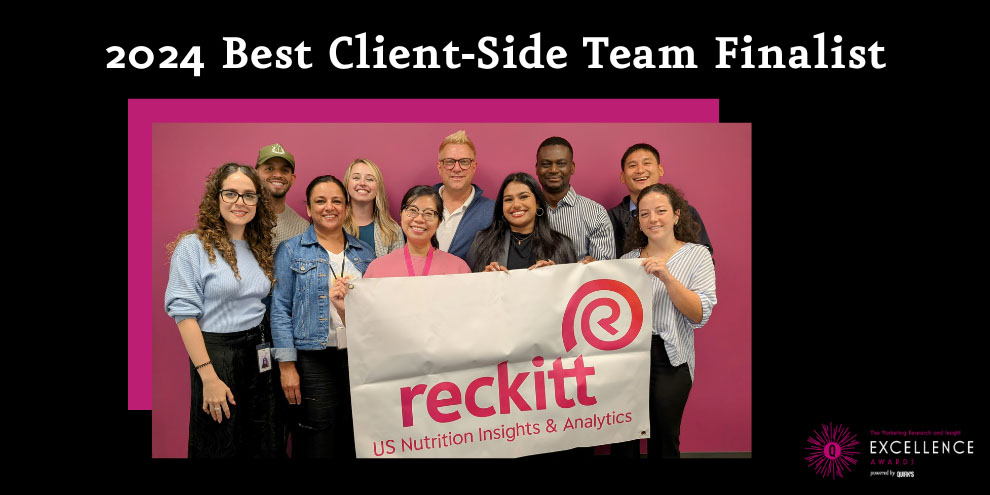Q&A with 2024 Best Client-Side Team award finalist, Reckitt/Mead Johnson U.S. Nutrition Insights and Analytics Team
Editor’s note: Reckitt/Mead Johnson U.S. Nutrition Insights and Analytics Team is a finalist of the 2024 Best Client-Side Team award, a category in the Marketing Research and Insight Excellence Awards. The winners of the awards will be announced on November 19, 2024, during a virtual celebration. To find out more about the awards, visit QuirksAwards.com.
The Reckitt/Mead Johnson U.S. Nutrition Insights and Analytics team is well positioned within the company to make a huge impact on business decisions.
“Nothing gets done at U.S. Reckitt Nutrition that this team is not measuring, forecasting or consulting on,” said Allison Howitt, director of insights and analytics - nutrition category, “Whenever they are partnering with the business, this team makes a huge impact. Whether it is querying the largest panel of new parents in the U.S., concentrating on medical marketing or showing the impact of multicultural marketing, this team uses their thought diversity to choose the right tool to answer the question and inspire their colleagues.”
Learn more about the Reckitt/Mead Johnson U.S. Nutrition Insights and Analytics Team from the following Q&A with Howitt.
How do you balance teamwork with your individual tasks?
As an insights and analytics director on the client-side, collaboration is everything – collaborating with my team members, business partners, management and supplier partners is the way to get things done and move the business forward. Great collaboration requires good communication, organization, active listening and a clear understanding of priorities.
But it is always important to have projects or deliverables that are yours to achieve individually, to show the business your personal thinking and value. In my case, I keep a few business priorities, such as masterbrand equity and long-term global category forecasting as mine to deliver personally. This keeps me in touch with the teams and processes as well as giving me an understanding of the headaches and joys of delivering projects to the business.
What would you say is your biggest hurdle as a team?
The biggest hurdle on the team is to drive a more modern, insight- and data-driven team philosophy. I continually challenge my team to move past being what I call a “traditional market researcher” – responds to business questions by executing studies and simply explaining results – and become a more strategic insight partner.
This ‘firestarter’ mentality requires the manager to not just work project to project but to craft well-told stories by connecting the dots between data and project related insights to provoke new thinking and drive actions that ultimately create business growth.
The biggest hurdle to my managers and directors becoming strategic insight partners is the time and energy it takes to connect the dots from multiple sources and craft well told stories. This takes ruthless prioritization of key business questions, with the teams only working on those that impact the big decisions and shielding the teams from the small stuff.
Do you have any tips for researchers looking to influence decision-making and connect with key stakeholders?
So often I find my teams and myself creating PowerPoints or Power BI dashboards that are generic enough to influence everyone – from the business unit president to the junior brand manager. But to be the most influential, we need to truly understand our audience and craft our stories and presentations based on the concern of the individual stakeholders and tailor our narratives to their specific interest and goals.
For example, when recently presenting to the business unit leadership team, it was imperative for me to know that this team was using my material for a board-level meeting. At that level, the slides and narrative had to be tremendously concise, with just the key indicators that would give the board the confidence that the business was in good hands. When I was presenting the same material to a more working group, my narrative was completely different, using much more data to prove my recommendations were sound.
Being completely audience-focused allows the client-side research team to best influence the key stakeholders and therefore drive growth in the business.
